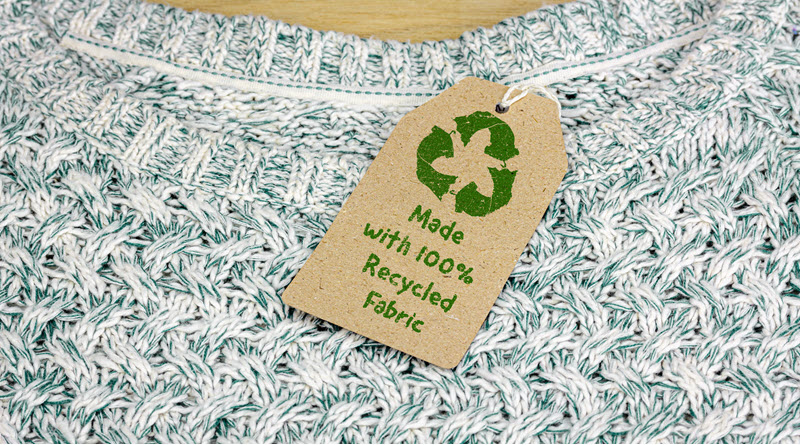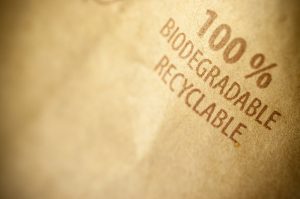
In 2020, we reached the tipping point where human-made materials – such as plastics, metals, textiles and other materials used to produce consumer goods – now exceed the mass of all natural living matter on Earth. The study by scientists at Israel’s Weizmann Institute of Science estimated that over the past five years alone, humans have produced an average 30 gigatons (30 billion metric tons) of material per year. If production continues in this vein, the weight of our impact will be triple that of Earth’s biomass by 2040.
Across the consumer goods market, companies are responding to pressure from consumers, and increasingly governments, to produce eco-friendly goods. A McKinsey survey found that consumers widely expect fashion players to uphold their social and environmental responsibilities, with over two-thirds considering the use of sustainable materials to be a key purchasing factor. Roughly the same proportion value a brand’s promotion of sustainability just as highly.
A new generation of sustainable materials

As more designers consider the wider impact of the products they design, and turn their attention to limiting the use of polluting mainstays such as plastic and leather, we’re beginning to see a new generation of innovative and more circular materials come onto the market.
On one hand, we see the emergence of alternative materials coming from or inspired by nature, such as vegetable leathers. On the other hand, we see more and more recycled materials, such as organic cotton, recycled polyester and recycled plastic, which can also be reused again.
Touching every type of consumer product
When it comes to leather goods, for example, we see more and more bags made primarily from mycelium, the mass of root threads underneath mushrooms, or other types of vegetable-based leather such as piñatex. Brands and retailers team up with biomaterials companies to create these natural materials, developing unique processes to form dense, intertwined leather-like structures.
Footwear brands also innovate widely on more circular materials while keeping performance top of mind. For example, Allbirds will soon produce shoes using Plant Leather, made from plant-based ingredients, including natural rubber, vegetable oil, citric acid and fillers like cork and rice husks. Allbirds said its carbon impact is 40 times lower than animal leather and produces 17 times fewer carbon emissions than plastic-based synthetic leather.
In the toy market, Lego plans to swap its iconic plastic bricks for plant-based and recycled alternatives. It has committed to making all its products from sustainable materials by 2030. The toy brand is currently researching the best mix of plant-based and recycled sources that will meet its safety, quality and durability standards.
Just the beginning
But whether companies are turning to recycled or recyclable materials, developing new materials from renewable sources, or both, there is still work to be done. A 2019 study by the UN Alliance for Sustainable Fashion found that the fashion sector alone was the second-largest consumer of water, and responsible for almost 10% of global carbon emissions.
Will recycling, advances in innovative materials and new design approaches turn the consumer goods industry’s environmental impact around before it’s too late?
Tackling the plastic problem

Over the next decade, many brands have pledged to change their ways and have already launched products made from recycled or sustainable materials. Adidas plans to make 17 million pairs of shoes from recycled plastic waste in 2021 and claims that more than 60% of its products are now made from sustainable materials. Ikea phased out all single-use plastic products from its global home furnishing range in January 2020. And within two years, Lego intends to launch bricks made from recycled plastic bottles.
According to waste, water and energy management services group Veolia, only 9% of plastics worldwide are recycled currently, but if all plastic was recycled then we could save 30-150 million metric tons of carbon annually.
Recycling is not without its challenges, though. Sorting plastics is a time-intensive and expensive process, made difficult by the huge variety of polymers produced today. Some are used together in layers, which can be difficult or even impossible to separate, and others are unsuitable for recycling. Lego will initially use soft drinks bottles from the US to make its new plastic toy parts, not plastic recovered from the sea as it’s already too degraded.
Even when polymers can be sorted into separate streams for recycling, color can be an issue, too. Many brands, driven by consumers, want to maintain crisp, clear colors in their products and packaging, but we may need to become more accepting of murkier colors – greys, greens and browns.
Scaling up production of new materials
Developing new materials isn’t the sole answer, either. At least not yet.
Research into alternative plant-based materials not only requires a great deal of time, effort and money, but the processes to create these materials must also reach maturity.

While there are some exciting developments coming to fruition, production scalability is still an issue to be resolved, especially when you consider just how much material needs to be made to satisfy demand. Indeed, experts believe it will still be some years before new, innovative materials make serious inroads into supply chains on an industrial scale.
However, progress is being made…
French luxury conglomerate Kering, whose brands include Gucci and Saint Laurent, established the Materials Innovation Lab, which has built up a library of over 3,000 certified-sustainable fabrics and works with suppliers to encourage traceability and the sourcing of more sustainable and innovative materials with lower environmental impacts. The group has also partnered with Fashion for Good to help identify and grow startups working at the intersection of fashion and sustainability.
Building on its vision to bring new materials and science to the forefront of the fashion and textile industries, lifestyle brand Pangaia has partnered with Kintra Fibers, makers of high-performance, bio-based and compostable yarns. Working together, the two companies plan to bring bio-based and biodegradable ‘synthetic’ fibers to scale, with the first commercial product expected to launch within the next 12 months.
“Environmental sustainability is bigger than any one brand, supplier or retailer. We all have to work together,” said Edwin Keh of the Hong Kong Research Institute of Textiles and Apparel, one of the authors of the inaugural Sustainability Index by the Business of Fashion magazine.
Moving towards a circular economy

As more companies strive to embed sustainable design into their processes, more are beginning to realize the value of using what is already available to them. They’re also considering how their products can be reinvented once they’ve reached the end of their intended function.
Ottan Studios, for example, makes furniture and interior design objects using food and garden waste, such as fruit and vegetable peels and pulps, and coffee grounds. One of its coffee tables is made from lentils and cut grass.
Organic linens brand Coyuchi now allows its customers to return once-loved blankets, throws, or bedsheets in exchange for a discount on new orders. The returned goods are mended and resold as part of a refurbished collection, or broken down to be spun into yarn for brand-new textiles.
Meanwhile, designer Tom Dixon has partnered with Norwegian energy and aluminum company Hydro to develop a chair made from recyclable aluminum. Dixon chose aluminum for its light and robust qualities and the fact that it can be recycled endlessly without losing its properties.
“The future needs circular materials and we need to design products that live longer, can be recycled or reused,” said Hilde Kallevig, head of Brand and Marketing at Hydro. “Understanding material properties and manufacturing processes will help create more sustainable products designed with recycling or reuse in mind, and that is why we believe it is important for designers and manufacturers to collaborate.”
Dassault Systèmes provides comprehensive solutions for companies in the Home & Lifestyle industry to enable their digital transformation strategies and support their long-term sustainability goals.
Discover related articles:

